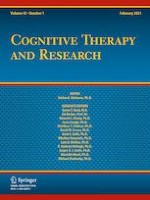14-09-2020 | Original Paper
Bridges over Troubled Waters: Mapping the Interplay Between Anxiety, Depression and Stress Through Network Analysis of the DASS-21
Gepubliceerd in: Cognitive Therapy and Research | Uitgave 1/2021
Log in om toegang te krijgenAbstract
Background
Symptoms of depression and anxiety often co-occur in the same individuals. In order to increase our understanding of concurrent depression and anxiety, it may be necessary to define and model psychopathology as a network of symptoms, that actively reinforce (or inhibit) one another. The current study set out to investigate how depression, anxiety and stress symptoms cluster together, and which symptoms act as bridges between these clusters.
Methods
Network analysis was used to investigate the symptom structure of the DASS-21 in a large international sample (N = 11,647). After checking whether the original symptom structure was replicated, the network was further investigated at multiple levels: individual symptoms that are central in the network (1) or function as bridges between clusters (2); symptom pairs that show especially strong associations (3), and the overall structure that may or may not differ between gender groups (4).
Results
Items referring to panic, worry, worthlessness, hopelessness and meaninglessness of life emerged as potentially crucial symptoms in the interplay between depression and anxiety. When comparing female and male networks, the results suggest that the network structures are similar, but not identical.
Conclusions
Specific symptoms can function as bridges between depression, anxiety and stress, which is clinically relevant on top of being theoretically important.
